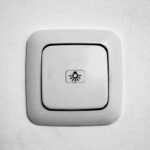
The laughter of children, the pitter-patter of tiny feet, and the joy that toys bring into a household are priceless moments that define parenthood. Yet, amid the delightful chaos, lies a responsibility that often goes unnoticed but is paramount for the well-being of your little ones: the meticulous cleaning and disinfection of their cherished toys. In this comprehensive guide, we embark on a journey to demystify the art of maintaining a hygienic haven for your children through an in-depth exploration of how to clean and disinfect their toys.
This guide is designed as your trusted companion, offering insights into the importance of cleaning toys, understanding the diverse materials toys are made of, establishing a regular cleaning routine, and delving into the intricacies of deep cleaning and disinfection. By the end of this journey, you’ll not only be equipped with the knowledge to keep your child’s toys sparkling clean but also empowered to create an environment that nurtures both their physical well-being and the longevity of their beloved playthings.
The Importance of Cleaning Toys
Before delving into the cleaning process, it’s essential to understand why keeping your children’s toys clean is crucial:
1. Preventing Illness
Children have developing immune systems, making them more susceptible to infections. Regular cleaning helps prevent the spread of germs and reduces the risk of illnesses.
2. Extending Toy Lifespan
Proper cleaning not only safeguards your child’s health but also extends the lifespan of their toys. Regular maintenance can prevent wear and tear caused by dirt and grime.
Types of Children’s Toys and Materials
Different toys require different cleaning methods. Understanding the materials of your child’s toys is the first step to effective cleaning:
1. Plastic Toys
Most common toys are made of plastic. Cleaning plastic toys is generally easy, as they can withstand various cleaning agents.
Cleaning Process:
- Use a mild detergent and warm water to clean the surface.
- Scrub with a soft brush or sponge to remove dirt.
- Rinse thoroughly to remove soap residue.
2. Plush and Stuffed Toys
Soft toys need gentle care to prevent damage. Many plush toys are machine washable, but some may need handwashing.
Cleaning Process:
- Check for any electronic components or parts that can’t be washed.
- Place machine-washable toys in a pillowcase to protect them.
- Use a mild detergent and a gentle cycle.
3. Wooden Toys
Wooden toys require special attention to avoid damage. Excessive moisture can lead to warping or splintering.
Cleaning Process:
- Wipe with a damp cloth and mild soap.
- Dry thoroughly to prevent moisture absorption.
Regular Cleaning Routine
Establishing a routine ensures that your child’s toys are consistently clean. Here’s a simple guide:
Daily Cleaning
Quick daily cleaning helps remove visible dirt and grime.
Steps:
- Wipe plastic toys with disinfectant wipes.
- Brush off loose dirt from plush toys.
- Check for any broken parts or loose pieces.
Weekly Cleaning
A more thorough cleaning session should be conducted weekly to address hidden germs.
Steps:
- Wash plastic toys in warm, soapy water.
- Machine wash or spot clean plush toys.
- Inspect wooden toys for any signs of damage.
Deep Cleaning and Disinfecting
Periodic deep cleaning is crucial for eliminating germs and bacteria that may not be visible.
Disinfecting Plastic Toys
Steps:
- Mix a solution of equal parts water and white vinegar.
- Dip a cloth or sponge into the solution and wipe down the toys.
- Allow the toys to air dry.
Disinfecting Plush Toys
Steps:
- Spot clean with a mixture of water and mild detergent.
- Use a fabric disinfectant spray, focusing on high-touch areas.
- Ensure plush toys are thoroughly dry before returning them to your child.
Disinfecting Wooden Toys
Steps:
- Wipe down with a mixture of water and mild soap.
- Use a solution of water and vinegar for disinfection.
- Dry completely to avoid damage to the wood.
Toy Storage Tips
Proper storage plays a vital role in maintaining clean toys:
1. Segregate Toys
Separate toys based on the material to prevent cross-contamination during storage.
2. Use Washable Containers
Store toys in washable containers to maintain cleanliness.
3, Rotate Toys
Rotate toys regularly to ensure all items are used and cleaned consistently.
Conclusion
Regularly cleaning and disinfecting your children’s toys is a simple yet powerful way to keep them healthy and safe. By understanding the materials of different toys and implementing a routine cleaning schedule, you can create a hygienic environment for your little ones to thrive in. So, roll up your sleeves, gather your cleaning supplies, and let’s ensure those toys are as clean as can be!







